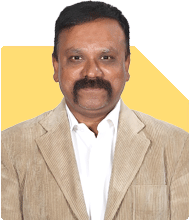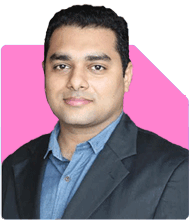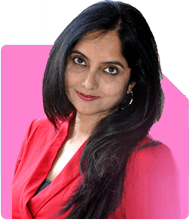Dr Nagarajan J S K |2575 Answers |Ask -Follow
NEET, Medical, Pharmacy Careers - Answered on Jul 21, 2025
He has over 30 years of experience in counselling students towards making the right career choices, particularly in the field of pharmacy.
As the JSS College placement officer, he has helped aspiring professionals prepare for and crack job interviews.
Dr Nagarajan holds a PhD in pharmaceutical sciences from the JSS Academy of Higher Education And Research, Mysore, and is currently guiding five PhD scholars.... more

Sir previously I have asked u but no reply from ur side whether a rank of 33000 will get a good chance in nit in csab round of counseling
There are chances of securing a seat in a GOOD NIT (newer - SIKKIM, MANIPUR, AND MIZORAM, or certain branches (less competitive) in older-JALANDAR, BHOPAL, ALLAHABAD, or IIIT through CSAB special rounds.
You may like to see similar questions and answers below
Nayagam P P |10849 Answers |Ask -Follow
Career Counsellor - Answered on Aug 01, 2024
Radheshyam Zanwar |6731 Answers |Ask -Follow
MHT-CET, IIT-JEE, NEET-UG Expert - Answered on Jul 19, 2025
Dr Nagarajan J S K |2575 Answers |Ask -Follow
NEET, Medical, Pharmacy Careers - Answered on Jul 28, 2025
Radheshyam Zanwar |6731 Answers |Ask -Follow
MHT-CET, IIT-JEE, NEET-UG Expert - Answered on Jul 26, 2025
Dr Dipankar Dutta |1837 Answers |Ask -Follow
Tech Careers and Skill Development Expert - Answered on Dec 05, 2025
Dr Shyam Jamalabad |108 Answers |Ask -Follow
Dentist - Answered on Dec 05, 2025
Dr Shyam Jamalabad |108 Answers |Ask -Follow
Dentist - Answered on Dec 05, 2025
Dr Shyam Jamalabad |108 Answers |Ask -Follow
Dentist - Answered on Dec 05, 2025
Dr Dipankar Dutta |1837 Answers |Ask -Follow
Tech Careers and Skill Development Expert - Answered on Dec 05, 2025
Ulhas Joshi |280 Answers |Ask -Follow
Mutual Fund Expert - Answered on Dec 05, 2025
Dr Dipankar Dutta |1837 Answers |Ask -Follow
Tech Careers and Skill Development Expert - Answered on Dec 04, 2025
Ravi Mittal |676 Answers |Ask -Follow
Dating, Relationships Expert - Answered on Dec 04, 2025
Anu Krishna |1745 Answers |Ask -Follow
Relationships Expert, Mind Coach - Answered on Dec 04, 2025
Anu Krishna |1745 Answers |Ask -Follow
Relationships Expert, Mind Coach - Answered on Dec 04, 2025


























